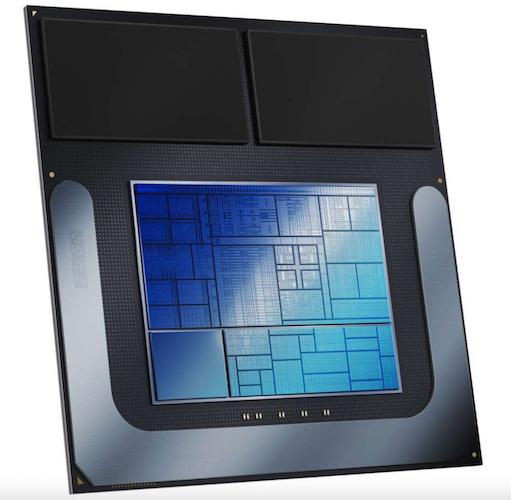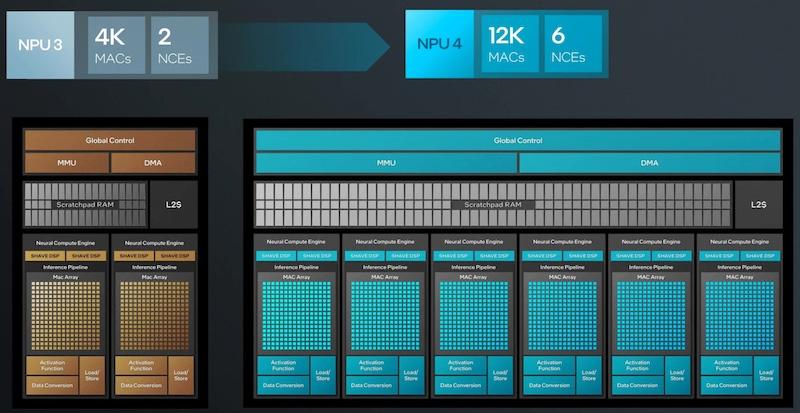Intel Makes Way for the AI PC Era With New Lunar Lake Architecture
Intel used this year’s Intel Technology Tour to announce its new Lunar Lake architecture, reported to bring 3x more AI performance than Intel's previous generation. Compared to Intel's last AI laptop chip, Meteor Lake, the new architecture triples the amount of NPU hardware on the die—boasting up to 48 NPU tera operations per second (TOPS)—doubles the memory bandwidth, and brings clock speeds to 1.95 GHz.

Lunar Lake includes 8 cores.
This architecture consists of two primary tiles: the Compute Tile and the Platform Controller Tile (PCT), connected using Intel's Foveros packaging technology.
Compute Tile Innovations
At the heart of the Lunar Lake architecture is the Compute Tile, which houses the latest generation of Intel's Efficient-cores (E-cores) and Performance-cores (P-cores). These cores use new microarchitecture enhancements to deliver improved levels of x86 efficiency.
While Intel designed E-cores for energy efficiency, handling routine tasks with minimal power consumption, P-cores focus on high performance for intensive workloads. The P-cores, based on the new Lion Cove architecture, feature 2.5 MB of L2 cache per core and a shared 12 MB of L3 cache among the four cores. This configuration optimizes the balance between performance and power consumption, enhancing single-thread performance significantly. The E-core cluster leverages the Skymont architecture to double the performance of the previous generation with improvements in caching, fabric connectivity, and power delivery.

Lunar Lake architecture.
Additionally, the Compute Tile integrates the new Xe2 graphics processing unit, neural processing unit (NPU 4), and image processing unit (IPU). The Xe2 GPU delivers over 80% more gaming performance and more than five times the AI throughput compared to the previous generation, achieving over 60 TOPS. The NPU 4 within the Compute Tile offers a significant upgrade, delivering up to 48 TOPS, tripling the AI computational power of the previous generation. The IPU enhances the camera experience with features like temporal noise reduction, multi-frame still processing, and improved dual exposure HDR, all while consuming less power.
Platform Controller Tile and System Integration
A major selling point of the new Lunar Lake architecture is the Platform Controller Tile (PCT), which focuses on security and connectivity.
The PCT integrates robust security components, including the Intel Partner Security Engine, the Intel Silicon Security Engine, and the Converged Security and Management Engine (CSME), providing a hardware-based root of trust. The PCT also supports connectivity options such as Wi-Fi 7, Bluetooth 5.4, PCIe Gen5, PCIe Gen4, and Thunderbolt 4 ports.
The Lunar Lake architecture also includes memory-on-package for fast data access and reduced latency, decreasing overall system power consumption. This feature contributes to the compact design of premium devices, offering significant PCB area savings and supporting up to 32 GB of LPDDR5 memory with high transfer rates. The memory-side cache, an 8-MB physical cache, further reduces traffic to DRAM, enhancing system performance and lowering power consumption.
Laptop AI Processing
Intel's Lunar Lake architecture is a notable development in the evolution of client processors. By integrating features such as Efficient cores, Performance cores, and advanced AI capabilities within an efficient framework, Intel is addressing the growing demands of modern computing, from mobile gaming to AI-driven tasks.
Sign up to our newsletter
Receive our latest updates about our products & promotions
